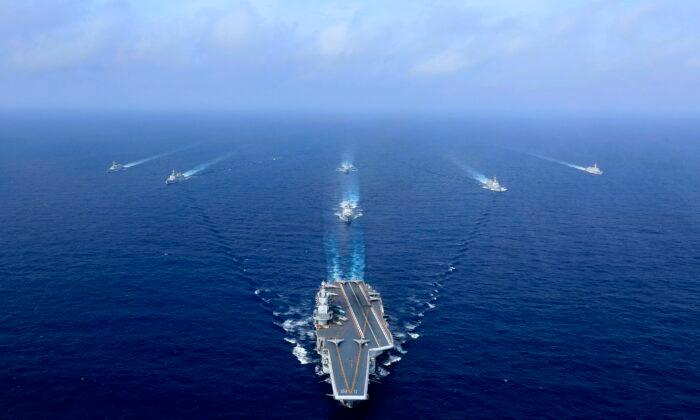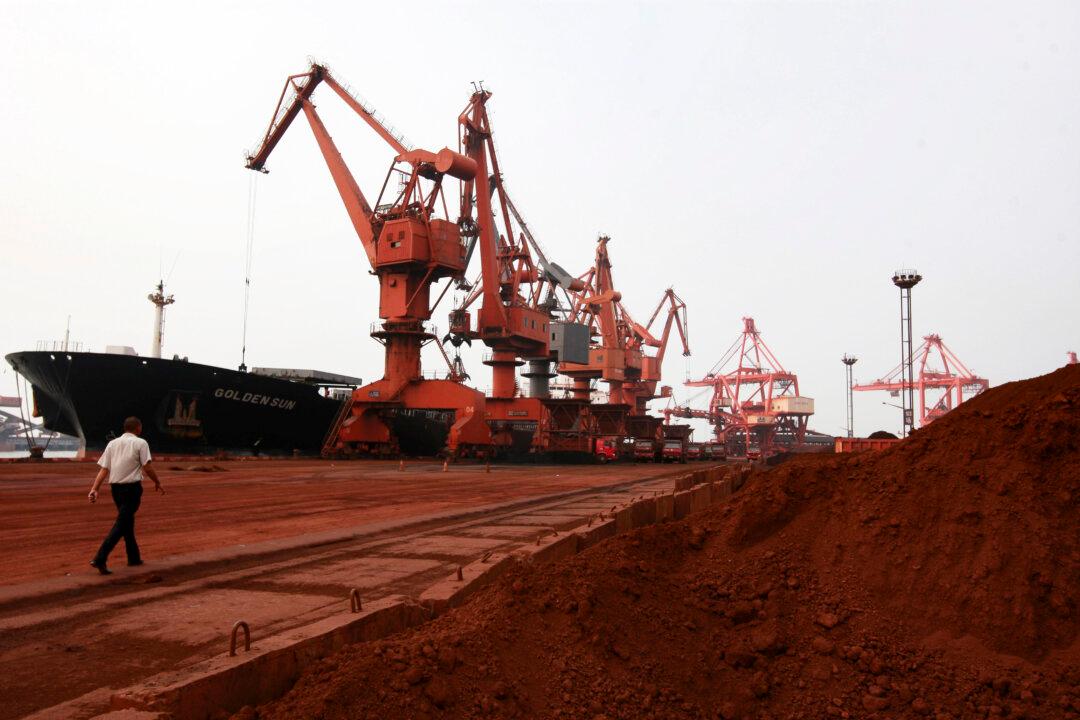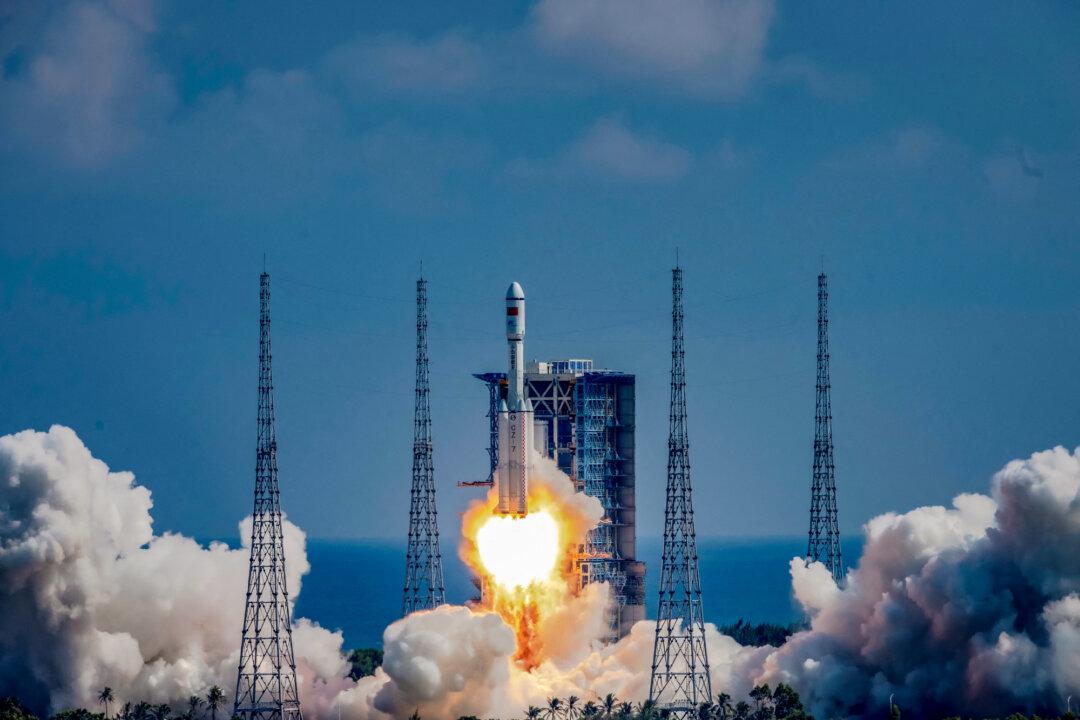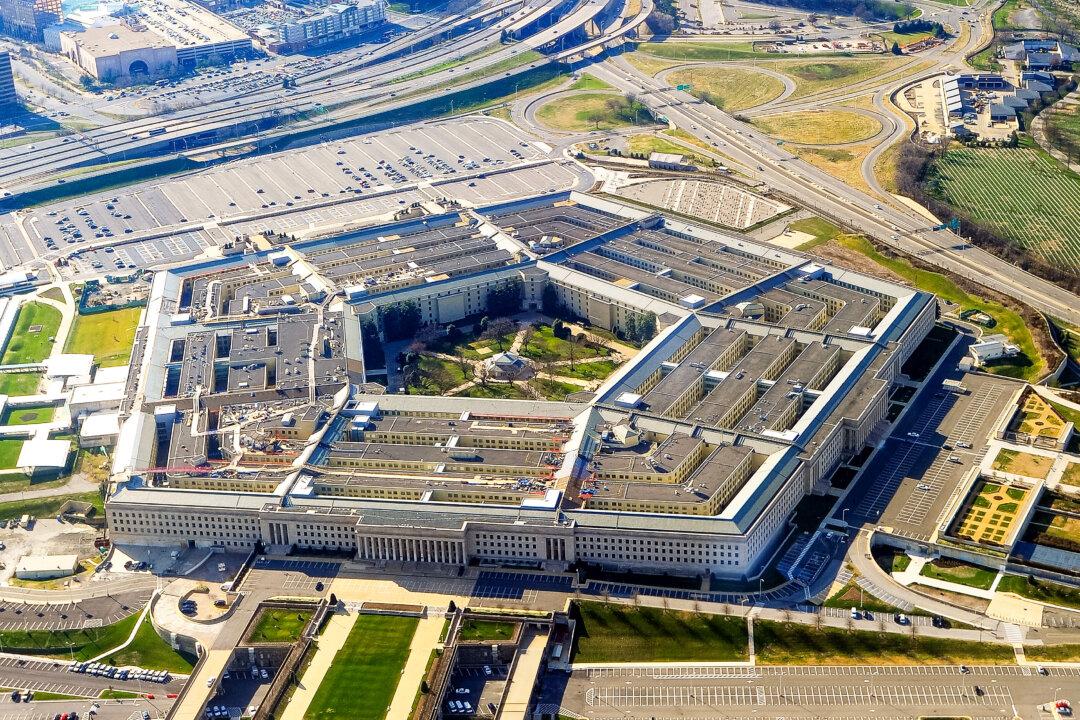Commentary
While much of America was focused on the drama and theatrics of the election of a new Speaker of the House and a domestic American airline system disrupted by winter weather, there was an unprecedented surge of naval and air challenges by China toward Japan and Taiwan.
One of the two existing Chinese carriers, the Liaoning, made a passage through the Ryukyu/Nansei island chain south of the major Japanese Island of Kyushu on Dec. 16. The second operational Chinese carrier, the Shandong, may have been
at sea also, and showed up later in January in the South China Seas
somewhat simultaneously with the American Nimitz Strike Group as the American and Chinese carriers conducted demonstrative activities of their capabilities—which in some descriptions was a
confrontation.
Around Christmas Day, the Liaoning and its task force conducted
operations within striking distance of Guam. This advance on Guam was rare and established a new high bar for the burgeoning Chinese carrier force. Having
both Chinese carriers at sea in December and January was also a new bar of operational tempo.
The Reality of the Liaoning Foray
What triggered the Liaoning Task Force pivot to Guam was likely the new National Defense Authorization Act (NDAA) signed by President Joe Biden on Dec. 23. A state-run Chinese news outlet headlined that the “
2023 NDAA turns Taiwan into a U.S. military outpost.”
In a tactical sense, some naval experts may minimize the Liaoning move on Guam. The Liaoning carries 50 percent of the number of planes and helicopters of an American carrier, and because it doesn’t have catapults and arresting gear, the number of sorties and the weight of the aircraft launched and recovered could potentially bring the capability of the Liaoning mathematically down to 15 to 25 percent of an American carrier strike group.
But the boldness of the move may indicate Chinese awareness of some overlooked factors and vulnerabilities. One is the ability of the Chinese to provide “covering fire” to the Liaoning task force through the long-range DF-26 ballistic missile—a very important capability, unmatched in the Western arsenal. Another factor is the presumption of readiness of planes and missiles on Guam for defense of the island. This is a significant presumption. Anything less than full availability and readiness of all the defensive capabilities would allow even a handful of Chinese planes launched from the Liaoning to establish air dominance and wreak havoc on unprepared bombers and fighters on the ground in Guam.
The ominous sailing of a single Chinese carrier toward Guam should not be dismissed outright when considering these and other factors.
Chinese Carrier Number Three to Conduct Sea Trials This Year
The Liaoning and Shandong will soon have another carrier, the Fujian, to complement the Chinese carrier force, and the Fujian
will reportedly be conducting sea trials this year. The Fujian is more along the lines of an American supercarrier, albeit conventionally powered. The Fujian appears to have at least three catapults, shown in the pictures covered by long maintenance coverings. By introducing the catapults and arresting gear, this should greatly increase the number of sorties and weights of launching and landing aircraft, bringing them closer to the American supercarriers in terms of weight and number of aircraft launched, which translates into more bombs and missiles on target.
Chinese carrier number four appears to be a copy of the Fujian with nuclear power, but there are concerns that the
Chinese nuclear propulsion technology isn’t mature enough yet. A few years ago there was talk of Chinese carriers five and six, but public talk on this has ceased and there have been assertions that
high costs and technical challenges have forced decisions to hold the Chinese carrier force level at four. Even with four, this means China could have two to three available at any one time.
Carriers are maintenance heavy, especially the catapults and arresting gear, so it can be presumed that at least one will be undergoing maintenance at any one time. With two to three carriers, complemented by the specter and deterrence impact of the DF-26 missile overwatch of their movements, this will provide China with significant capability to support operations against Taiwan, including holding the American facilities on Guam at risk.
Reasonable Deterrence Measures Are Important
The frenzy of Chinese air and naval activity in December was extraordinary
and continues. An additional amphibious assault capability was communicated by the reveal of
large, specialized float on/float off vessels that will be quite helpful in any amphibious invasion. Taiwan has made an important response by announcing the
extension of all conscription service to one year, which will help enlarge its military forces. Interestingly, a report was released showing that in most scenarios (
pdf), China would be defeated in any attempt to take Taiwan, although Taiwan, Japan, and America would take heavy losses also. To prevent any attempted invasion, it’s prudent to rapidly build up deterrent options to defend Taiwan from aggression.
Views expressed in this article are opinions of the author and do not necessarily reflect the views of The Epoch Times.





